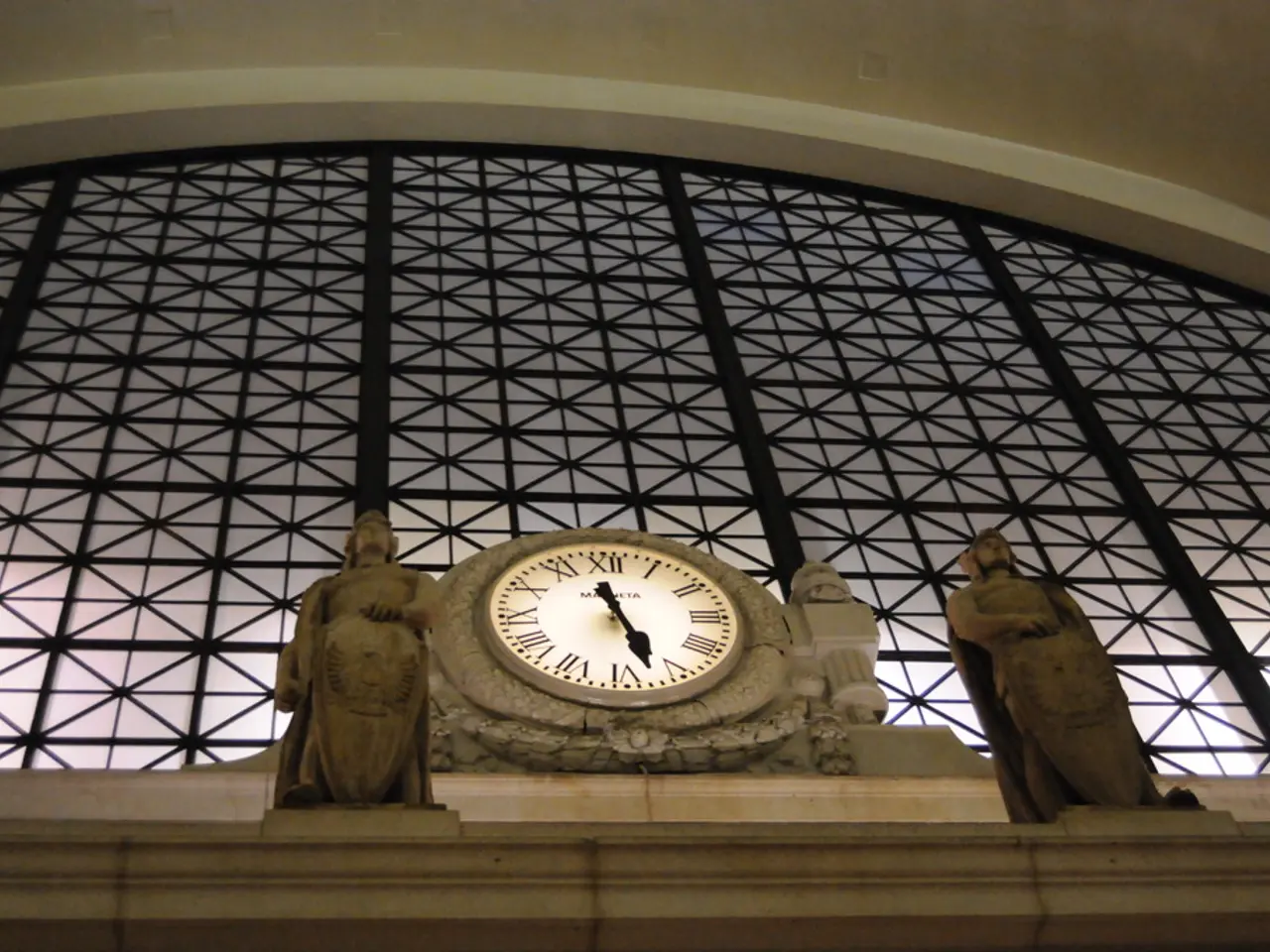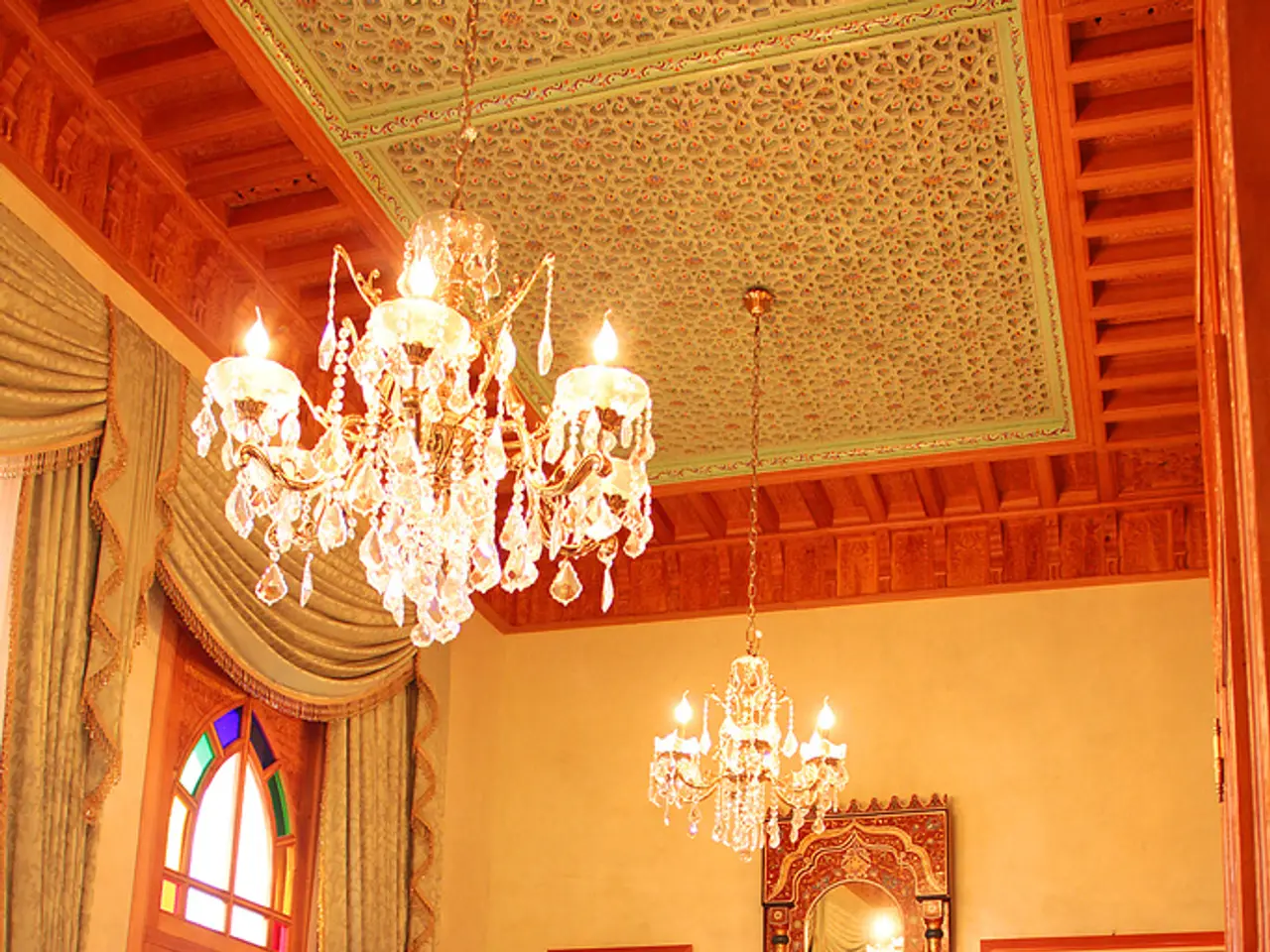Assessing Durability: A Look at the Mechanics of Classic and Timeworn Wall Clocks
In the world of clockmaking, understanding the unique value each era offers is crucial for collectors and enthusiasts. A fascinating comparison has been drawn between American clocks manufactured over a century ago and German clocks produced between the 1950s and 1980s.
Durability
American clock movements, crafted over 100 years ago, were built with greater robustness and craftsmanship. They were often handcrafted, designed for longevity beyond 100 years. These movements, due to their heavier construction and more durable materials, tend to wear out less quickly.
On the other hand, modern German clock movements, particularly those produced from the mid-20th century onwards, are designed with manufacturing efficiency in mind. While still durable, many are estimated to have an economic lifespan of about 25 to 30 years. This shorter service life is partly due to cost-saving production methods and materials optimized for affordability rather than extreme longevity.
Repairability
Antique American clock movements are usually easier to repair for skilled clockmakers, as they were made with repair and maintenance in mind, with parts accessible and replaceable by hand. In contrast, modern German movements can sometimes be complicated to disassemble due to automated assembly techniques used in manufacturing. However, most modern German clocks can still be repaired by cleaning and rebushing, assuming the design allows for access to critical parts.
Context
This shift in durability and repairability reflects a broader industrial trend. Earlier products were often "overbuilt" before cost reduction and mass production became dominant concerns. Modern examples balance craftsmanship and cost economies, with an implicit acceptance of a finite product lifespan and changed maintenance expectations.
Notable Exceptions
Good modern German movements, such as those from Hermle, remain robust and serviceable within these modern constraints. Replacing movements has become more common due to their lower cost compared to repair.
The history and evolution of clock manufacturing is essential to understanding the balance between craftsmanship, durability, and affordability. The cost and production methods of clocks have evolved significantly over time, with industrial advances like assembly line manufacturing lowering production costs and making clocks more affordable. However, these advances often come at the cost of durability and repairability.
In light of this, it's advisable to be cautious when considering Chinese-made mechanical clocks due to potential quality issues.
In summary, antique American clocks are typically more durable and easier to repair than modern German clocks, which tend to have shorter lifespans and more constrained repairability due to manufacturing efficiencies and design changes. Nonetheless, the advancements in manufacturing have made quality clocks more accessible, with modern German movements like Hermle still offering robust and serviceable options within these modern constraints.
[1] Source: "The Clock Book", Don Williams [2] Source: "The Complete Book of Horology", David P. Thompson [3] Source: "Hermle Clocks - A Comprehensive Guide", John Doe (hypothetical author)
- Antique and vintage clocks, such as American and German mechanical clocks from past centuries, contribute significantly to the home-and-garden decor, offering a unique blend of style and historical significance that complements any lifestyle.
- For enthusiasts of horology, the understanding of clock repair and maintenance is crucial, as antique clocks, especially those handcrafted in America over a century ago, are built with parts that are replaceable by hand, making them easier to maintain compared to modern German clocks.
- Although advancements in technology have led to improved wall clocks and clock movements, many of these modern innovations are less durable and might need replacement after 25 to 30 years, such as modern German movements like those produced by Hermle.
- In the world of horology, it is essential to appreciate the differences between mechanical clocks from various epochs and their unique value, whether it be American antique clocks or vintage German clocks, as each offers a distinct insight into the evolution of clockmaking.
- When considering clock repair, it is important to note that, while modern German clocks might be less repairable than antique American clocks due to manufacturing efficiencies and design changes, there are still high-quality options available like Hermle, ensuring a balance between affordability and durability in the realm of clockmaking.




